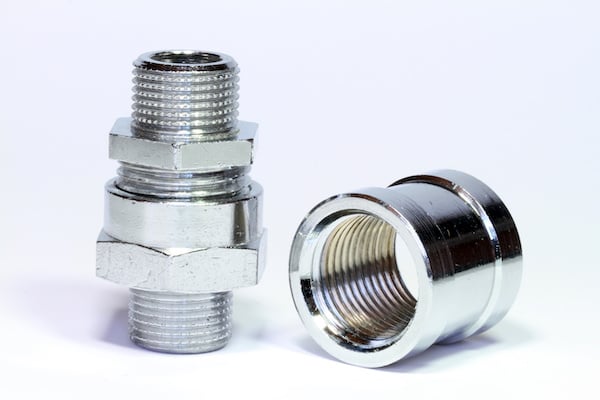Several factors come into play when considering whether hydraulic fittings can be reused. The most crucial is the condition of the fitting. The fitting may appear in good condition, but it must be inspected before reuse. Look for wear, corrosion, the condition of the threads and any O-rings or seals for physical damage.
Inspecting the hydraulic fitting
Visual inspection is an excellent way to detect any signs of damage on the fitting, such as cracks or deformations. For example, corrosion can weaken the metal and compromise the fitting's integrity. If there are any signs of decay, the fitting should be replaced to ensure the safety and reliability of the hydraulic system. In addition, it’s best to replace O-rings or seals regardless of how they may look and check the threads with a gauge to ensure they run true.
Proper handling is another crucial factor that must be considered when reusing hydraulic fittings. Any mishandling or improper installation of the fittings can lead to failure, resulting in leaks and other issues. Therefore, following the manufacturer's instructions for handling, installing and tightening the fittings is essential.
Getting the fitting ready for installation
If the fitting is found to be in good condition and has been handled correctly, it can be reused safely. But before reusing the fittings, they must be thoroughly cleaned to ensure no debris or dirt can cause leaks.
It is important to note that permanent hydraulic fittings are designed to be used only once and cannot be reused. These fittings are typically crimped or welded onto the hose or tubing, making them difficult to remove without damage. Crimped and weld fittings are the only choice in many applications, yet reusable fittings, such as most NPT, JIC, BSP, ORFS and O-ring Boss are designed to be removed and reused multiple times when following the above procedures, making them more cost-effective in the long run.
In conclusion, the reuse of hydraulic fittings depends on several factors, including the fitting's condition, proper handling and whether the fitting is permanent or reusable. Regular inspection and maintenance of hydraulic fittings can help identify any signs of wear or damage early, ensuring the safe and reliable operation of the hydraulic system. It is always best to replace the fitting when in doubt to avoid potential risks.
To learn more about instrumentation fittings, check out our BluPrint!

